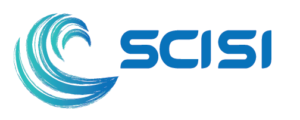ADVANTAGES AND DISADVANTAGES OF SELF-FUNDING
Many small and mid-size employers invest millions of dollars each year in fully-insured employee benefit plans. This often impacts the employer’s employee compensation budget without producing the desired return on investment.
- Insured plan design choices are typically limited, inflexible and restrictive.
- Cost containment programs may be less than effective or even unavailable.
- Insured plans consume employee compensation funds that could be used to decrease staff turnover and attract highly-qualified employees.
For many employers with a stable benefit and financial history, there is an alternative: Self-Funding.
SELF-FUNDING: WHAT IS IT AND HOW DOES IT WORK?
Self-funding is an alternative approach to financing an employee benefit plan. Large employers have long used self-funding to directly fund their expected claims while separately purchasing Excess Loss coverage (often referred to as “Stop Loss”) as an extra measure to protect the employer’s plan against catastrophic claims.
Here’s how it works:
Choose a Plan of Benefits: The employer, with the assistance of an agent, broker and/or a third-party administrator (TPA), decides on a plan of employee benefits. The plan may be identical or similar to the plan currently provided on a fully-insured basis or it may be a new, innovative plan not available in the fully-insured market.
Select a Professional TPA: The TPA administers the plan on behalf of the employer. This includes:
- Maintaining proper funds on deposit for claims payment.
- Paying Claims
- Preparing Claim Reports or other data necessary for the plan and/or the Excess Loss insurer.
- Providing plan information for filing government-required reports.
- Billing and collecting administrative fees and Excess Loss premium for the plan.
Prepare the Plan Document: A Plan Document is prepared. It contains all of the plan provisions, including eligibility, benefits covered, benefits limited or excluded, and termination. Materials such as employee benefit descriptions, employee and dependent ID Cards, and other documents needed to administer the plan are usually prepared by the TPA.
Secure Excess Loss Coverage: Arrangements are made to purchase separate Excess Loss Coverage in order to cap the plan’s medical claim payment responsibility. The amount of risk to be insured by the Excess Loss coverage will vary depending on the employer’s size, plan of benefits, employer’s location, financial resources, prior experience, the employer’s tolerance for risk, and other factors. The cap is determined by the amount the plan is required to pay for an individual’s medical claims (Specific Excess Loss Coverage) and the combined amount of all medical claims the plan must pay during a given period (Aggregate Excess Loss Coverage). The Plan is thus protected against both high individual medical claims cost and high-volume medical claims cost.
- Specific Excess Loss Coverage Specific coverage provides protection for the employer against unexpected, high dollar claims on any one individual. The employer selects a per-person “attachment point” which is the amount of claim responsibility the plan agrees to retain. A minimum amount may be required by law. Eligible claims above this “attachment point” are reimbursed by Excess Loss coverage.
- Aggregate Excess Loss Coverage Aggregate coverage provides a ceiling on the dollar amount of eligible expenses that an employer would pay, in total, during a Contract Period. Expected monthly claims costs are determined using the number of plan participants, covered dependents and other factors. The amount may change from month to month but will never be less than 100% of the monthly aggregate “attachment point” determined at the beginning of the contract period. Aggregate Excess Loss coverage accumulates each month to the end of the Contract Period. IMPORTANT NOTE: Since Aggregate Excess Loss coverage is determined by Contract Period and in the event the employer terminates prior to the end of the Contract Period, the employer is responsible for all financial risk for all medical claims that would have been covered by the Aggregate Excess Loss coverage.
Select a Contract Period: The Contract Period chosen determines how medical claims are processed. Some contract periods may not be available, depending on the employer’s group size or other factors. The most common Contract Periods are:
- 12/15 Contract Period: Eligible medical claims incurred within the Contract Period (12 months) and paid within the Contract Period or paid within three months immediately following the end of the Contract Period (15 months) are covered by the plan or Excess Loss coverage. The plan’s total maximum costs for 12/15 Contract period include the costs for the three months of run-out claims.
- 12/18 Contract Period: Eligible medical claims incurred within the Contract Period (12 months) and paid within the Contract Period or paid within six months immediately following the end of the Contract Period (18 months) are covered by the plan or Excess Loss coverage. The plan’s total maximum costs for a 12/18 Contract Period include the costs for the six months of run-out claims (i.e. medical claims incurred but not processed and paid before the end of the Contract Period).
- 12/12 Contract Period: Eligible medical claims incurred and paid within the Contract Period are covered by the plan or Excess Loss coverage. The costs of claims incurred and paid in the 12 month Contract Period are included in the plan cost. NOTE: An option often referred to as “Terminal Liability Option” may be required with this Contract Period. “Terminal Liability” is an option that must be selected and paid for at the beginning of the contract period; it provides that, if Excess Loss coverage terminates at the end of the Contract Period, claims incurred during the Contract Period and not paid by the end of the Contract Period are eligible for payment.
SELF-FUNDING ADVANTAGES
Self-Funding typically offers the employer the following advantages:
- Elimination of most premium tax: There is no premium tax for the self-funded claim fund which immediately results in approximately 2-3% cost savings for the plan.
- Control over Benefit Dollars: The employer knows where employer funds are going and what they’re used for. If medical claims for a plan year do not exceed a predetermined limit, the plan keeps those dollars and they can be used to offset the following year’s expenses or reduce contribution levels for the employer or employees.
- Reduced operational costs: Employers find that overall administrative costs for a self-funded program incurred through a professional TPA are usually lower than costs charged by the prior insurance carrier.
- Control of Plan Design: The employer maintains control of the plan design, including making necessary plan changes to control abuses.
- Cost-effective claim processing: A TPA’s success depends upon providing accurate and controlled claim processing for each employer.
- Carrier profit margin and risk charge advantageous: The insurance carrier’s profit margin and risk charge are eliminated for most of the plan.
- Enhanced Cash Flow: Employer dollars formerly held in the form of unreported or pending claims reserves by the insurance carrier are available to the employer for other uses.
- Extra costs for state benefit mandates avoided: State laws and regulations that require health insurance plans to provide various benefits or to follow other administrative requirements do not apply, since self-funded plans are subject to ERISA.
- Cost & Utilization Controls: Depending on the TPA, a variety of cost control programs may be available to the employer such as access to a choice of preferred provider organizations (PPOs), large case management, second surgical opinion, outpatient surgical, and hospital bill audit programs, rather than being restricted to an insurance company’s limited in-house programs.
- Return on Investment for Reserves: Interest on reserves established by the employer are controlled by the employer.
- Risk Management through Excess Loss Coverage: The employer selects the amount of retained risk and the amount of risk to be covered by the Excess Loss coverage. An insurance carrier typically has set pooling levels allowing little flexibility.
SELF-FUNDING DISADVANTAGES
Although self-funding is an excellent alternative for financing an employee benefit plan, it may not be appropriate for every employer. To take full advantage of self-funding, the employer must be willing to exercise discipline – over eligibility for benefits, over the actual payment of claims, and in the incurring of expenses. Regardless, self-funding may not reduce costs every year – or at all. A few potential disadvantages include:
- Risk Assumption: The employer assumes all risk up to the Excess Loss coverage attachment points.
- Provision of Services: The employer must provide those services normally provided by the insurance carrier. This is normally overcome by contracting with a skilled, professional TPA.
- Asset Exposure: The employer’s assets are exposed to liability created by legal action against the self-funded plan.
For more information on Self-Funding, please contact:
Sandy Coventry, RHU / Sandy Coventry Insurance Services, Inc.
440 Stevens Avenue, Suite 200, Solana Beach, CA 92075
858-779-2486
SCoventry@Scisi.net
CA License #0G72966



